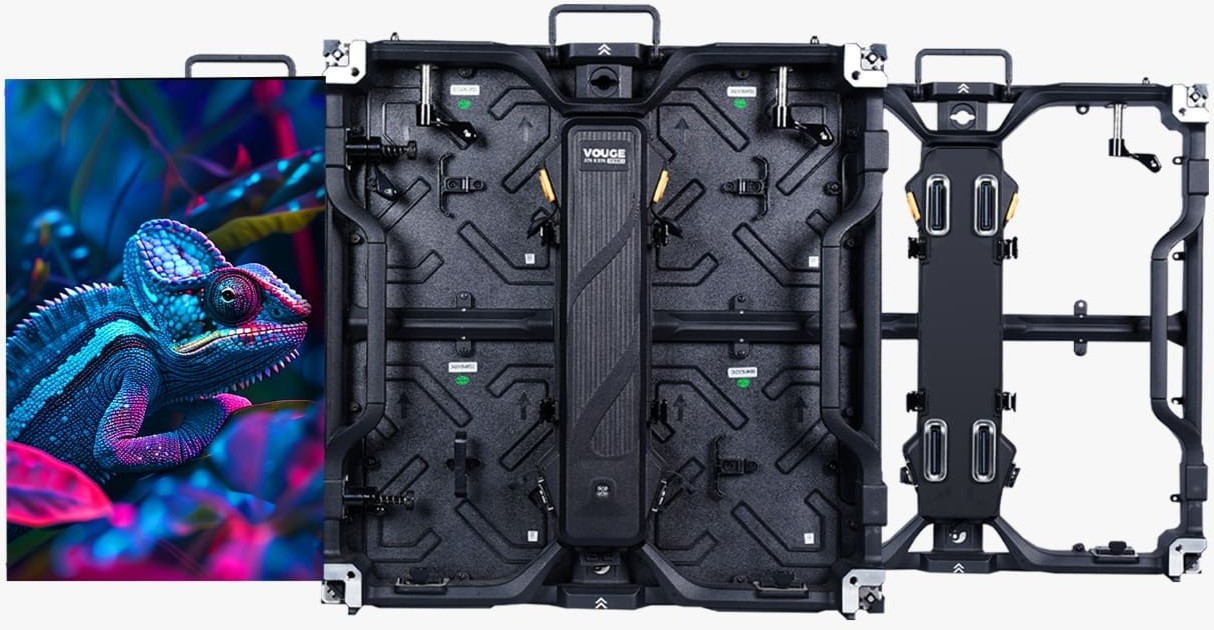Blog Details
How LED Video Wall Manufacturers Are Shaping Modern Visual Technology

- Posted On 19 Apr 2025
#rentalledScreen #advertisingleddisplay #outdoorledscreenkochi #ledvideowall #leddisplay #leddisplayscreen #leddancefloor #toprentalledscreen #8x12ledwallsindia #8x12ledwallschennai #ledweddingstage #fixedledscreenkochi #videoledwallstamilnadu #LedwallKerala #topgproseries #bestledscreenmanufacturers #ledwallsupplierBanglore #advertisingleddisplay #videowallmanufactures #P3ledwallsmanufactures #bestP3ledwalls #ledscreenservice #topvideoledwalls #indoorledvideowall #outdoorledwall #outdoorledwallkochi #ledwallsupplierHyderabad #leddisplaymanufacturescalicut #ledvideowallcalicut #ledwallKochi
The World Behind the Screens: An Insight into the LED Video Wall and Display Manufacturing Business
In a world dominated by digital images, the presence of LED video walls and LED displays has become a part of daily commercial and public life. From dazzling city billboard advertising along boulevards to video walls in command centers, malls, and religious venues, and live venues, LED video wall technology innovates—driven by a sequence of devoted developers around the world. These firms lead the development effort, playing instrumental roles in defining the future of digital communication and entertainment.
What Is an LED Video Wall?
An LED video wall is an off-the-shelf display solution comprised of a few panels of LEDs arranged side-by-side in seamless integration to provide one homogenous screen. To traditional displays, LED video walls provide stunning brightness, deep color, and high definition—high enough for use both indoors and outdoors.
These walls are capable of hosting anything from live video and presentations to interactive advertisements and live data, giving designers unprecedented flexibility. Their modular design also allows for customized shape and size, giving designers the option to get creative about installations in venues like stadiums, conference facilities, transportation hubs, and performance venues.
The Role of LED Display Manufacturers
The vision revolution is the reason behind those who make LED displays. The responsibility upon them is to design, develop, research, and produce the LED display panels and related technology. These manufacturers supply to markets of diversified nature such as advertisement, entertainment, sports, retail, transport, and education.
From the procurement of raw materials to the application of the latest semiconductor technologies, these manufacturers assure quality, reliability, and durability of their product. They also promise to minimize the power consumption of LED technology and make it cheaper in the long run.
Manufacturing Process: Idea to Installation
LED video wall manufacturing is a high-tech, multi-phase process with high precision and quality inspection. Below is a simplified overview of how this is accomplished:
Component Sourcing: LEDs, PCBs (printed circuit boards), driver ICs, and other electronic parts are supplied by specialist providers. Component choice directly affects brightness, color consistency, and end-product lifespan.
PCB Assembly: The tiny LED chips are assembled onto circuit boards using Surface Mount Technology (SMT). This demands absolute accuracy, especially for high-density displays with very low pixel pitches.
Module Assembly: Encapsulated Assembled PCBs are stacked together in modules. These modules form the base of large LED panels. The testing is performed at this level to ensure functionality and compliance.
Cabinet Installation: Modules are then mounted and fixed into large panels or cabinets. These cabinets are built keeping thermal management, weather resistance (for outdoor usage), and installation in mind.
Calibration and Testing: Brightness and color uniformity is achieved through employing high-quality calibration. This provides the entire video wall the appearance of a seamless and colorful canvas. Panels are also subjected to water resistance, shock tests, and electromagnetic interference tests.
Packaging and Delivery: Panels are then packaged tightly with climate, vibration, and anti-static protection to ship to customers across the globe.
Innovation Driving the Industry
Manufacturers steadily progress through R&D in several key areas:
Mini and Micro LEDs: These technologies enable even tinier pixel pitches for super-high resolution displays, which are best applied to high-end indoor use such as broadcasting studios and corporate lobbies.
Flexible LED Panels: Development of bendable or curved LED screens offers new design possibilities, including cylindrical or wavelike installations.
Energy Efficiency: Power savings accompanied by increased brightness and life, achieved through new materials and better power management technology.
Smart Integration: LED displays can be connected to AI, IoT, and cloud-based content management platforms for dynamic, real-time control and responsiveness.
Challenges Facing Manufacturers
Despite the runaway demand, LED display manufacturers face a host of industry-level challenges:
Shortage of Components: Global supply chains can be interrupted, leading to a shortage of valuable electronic components.
Quality Maintenance: With intensified competition, providing consistent product quality in mass production is difficult yet necessary.
Desire for Tailoring: Buyers desire tailored products much more, which compels companies to make flexible production and design systems.
Environmental Regulations: Compliance with international environmental standards (e.g., RoHS or WEEE) and green projects adds complications to the production process.
International Diffusion of LED Display Production
Certain regions have become hubs of manufacturing on the basis of lower manufacturing costs and accessibility of raw materials, while others focus on innovation in design and high-end solutions. Global distribution networks and local back-up mechanisms have been created by most manufacturers to address the higher global demand.
This globalization also triggers competition, which motivates manufacturers to continuously raise the bar on product performance and customer service.
The Future of LED Displays
The future of manufacturing LED displays is rosy—both literally and metaphorically. We can expect:
Increased use of 3D and immersive LED technology.
Transparent LED displays for retail and architectural applications.
Low-emission, recyclable, and sustainable production technologies.
Increased integration with smart cities and intelligent transport systems.
As the globe gets increasingly digital, transparent, and more potent visual communication, LED video wall and display businesses are not just keeping pace—they're leading the way, in fact—they're making the bright world we all live in every day.
